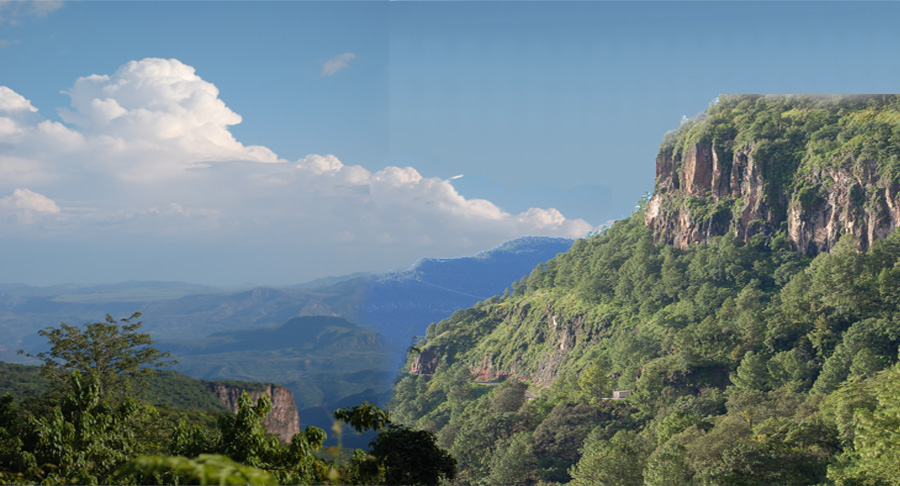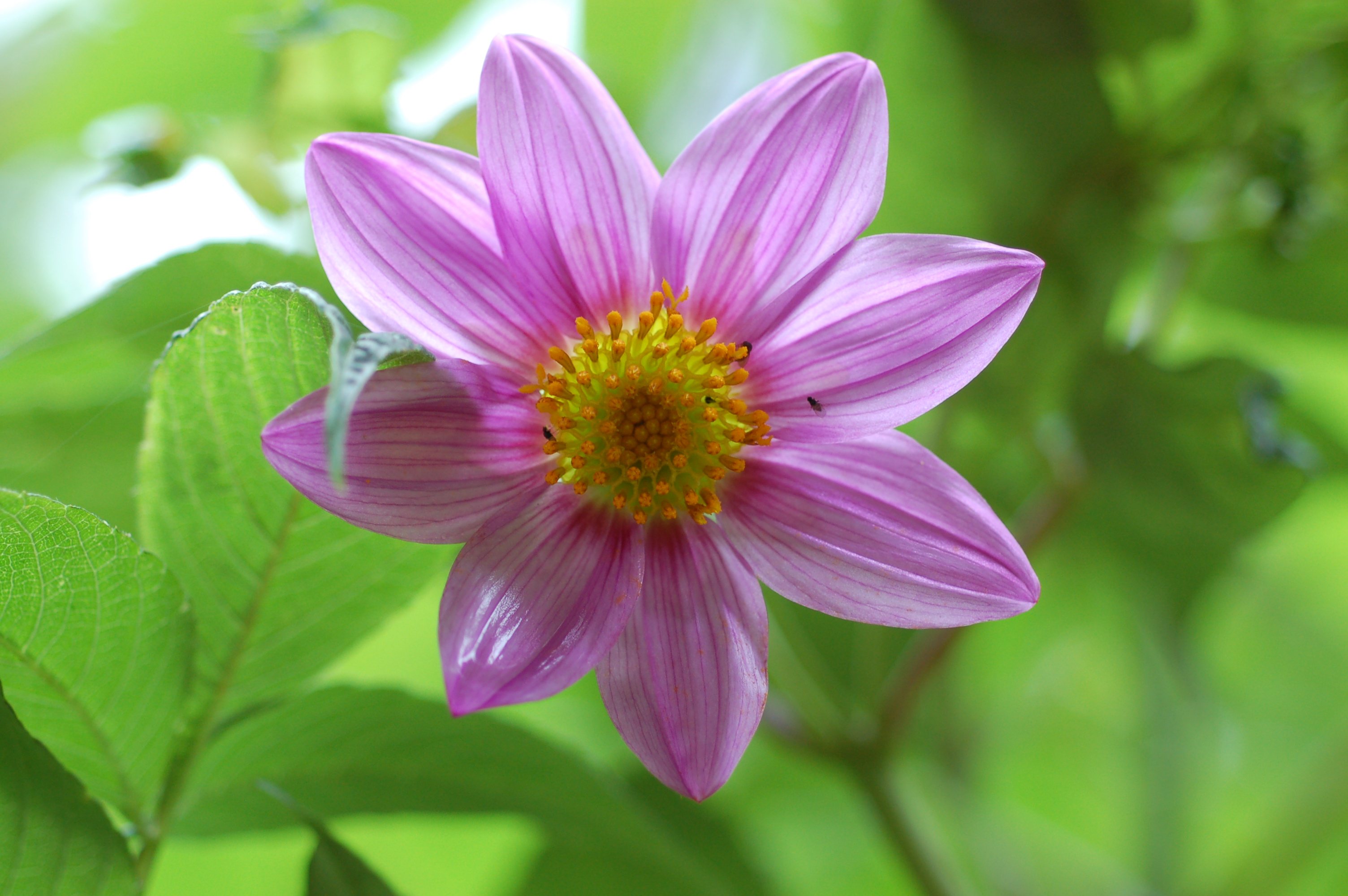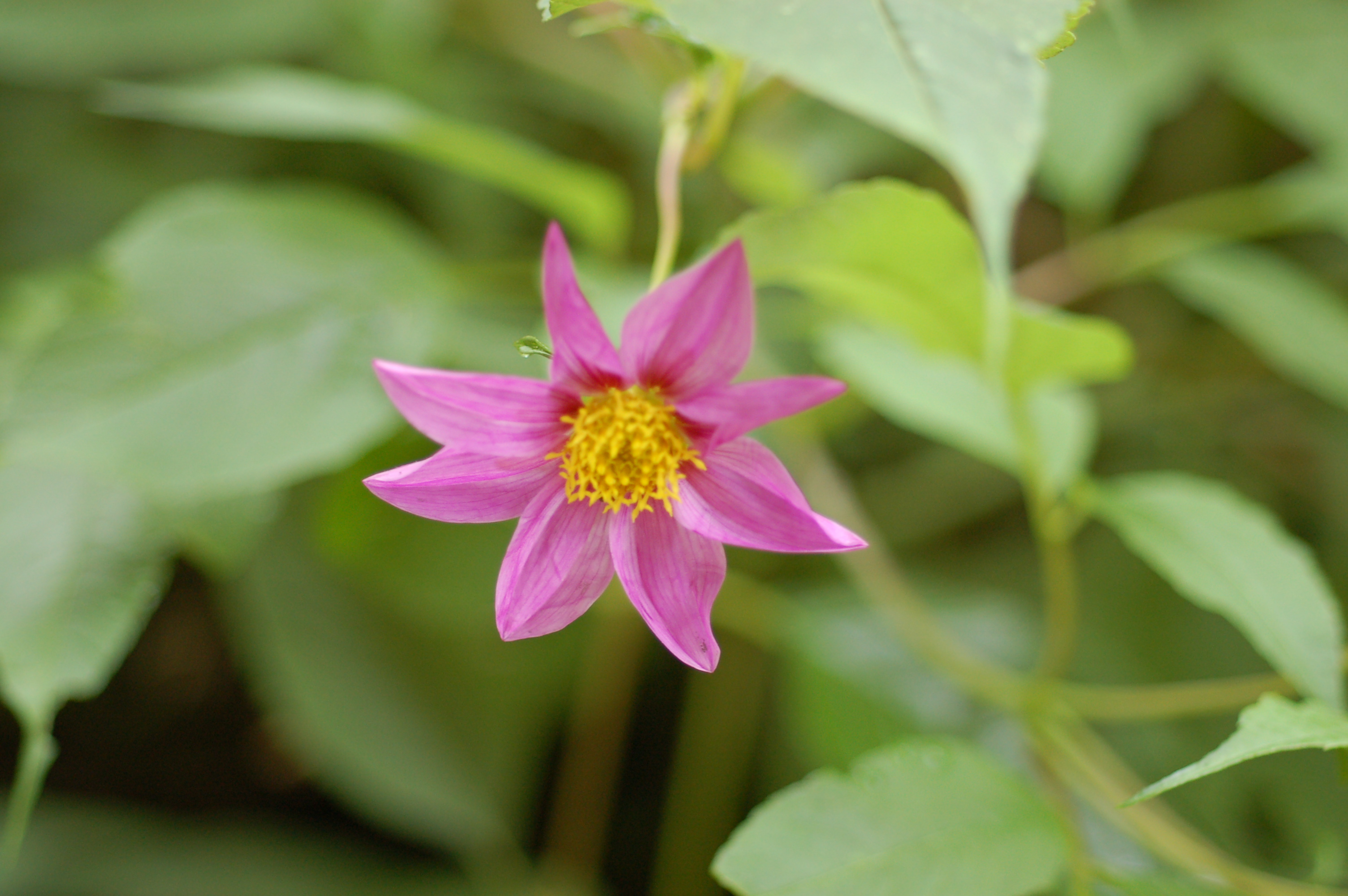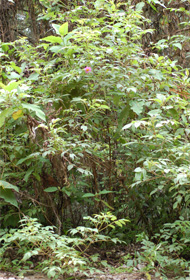

Dahlia tenuicaulis Sørensen was first described by Paul D. Sørensen in 1969 (Sørensen, 1969). The type specimen was collected in a cloud forest at about 2,750 meters (9,000 feet), in the state of Oaxaca, Mexico, on 25 August 1965. D. tenuicaulis is now known from high mountain peaks in the states of Jalisco, Colima, Michoacán, Guerrero, and Oaxaca. Its habitat includes the cool cloud forests of Pinus (pine species) and Quercus (oak species) or Pinus and Abies (fir species), at elevations of about 2,570-2,960 meters (8,400-9,700 feet) (Saar, 1999). Plants are more likely to occur on WSW to NW slopes than those with a more southern exposure, except at the highest elevations (Saar, 1999). In this damp environment, canes are often covered with mosses (DES, personal observations).
Canes are perennial to 3.4 m (12.5’) and grow from thickened rhizomes; most plants are multi-stemmed. Younger canes are glaucous and slightly angled, while older canes are more rounded and glabrous with prominent lenticels. Older canes (at least two years of growth) can be as large as 10 cm (3.9 inches) in diameter, but are usually much thinner (< 5 cm; 2.0”) (DES, personal observations). Leaves are opposite; petioles encircle the stem with thin tissues. Length (including petiole) is about 27-43 cm (10.6-16.9”) long and once or twice compound. Flowers are generally produced on new growth. Flower head diameter is up to 8 cm (3.1”) across; ligules are lavender, discs are yellow. Flowering occurs from August through October, depending on location. This species has 32 chromosomes per cell (n=16).
The overall appearance of the plants is very similar to Sambucus (Elderberry). When not in flower, D. tenuicaulis could very easily be mistaken for a species of Sambucus (DES, personal observation). In this case, the typical parsley/celery smell of crushed Dahlia leaves might be the quickest way to differentiate between the two genera.


References
Saar, D. E. 1999. A phylogenetic analysis of the genus Dahlia (Asteraceae): an interdisciplinary study. Ph.D. dissertation, Department of Biological Sciences, Northern Illinois University, DeKalb, IL, USA, 266pp.
Sørensen, P. D. 1969. Revision of the genus Dahlia (Compositae, Heliantheae-Coreopsidinae). Rhodora 71: 309-365, 367-416.